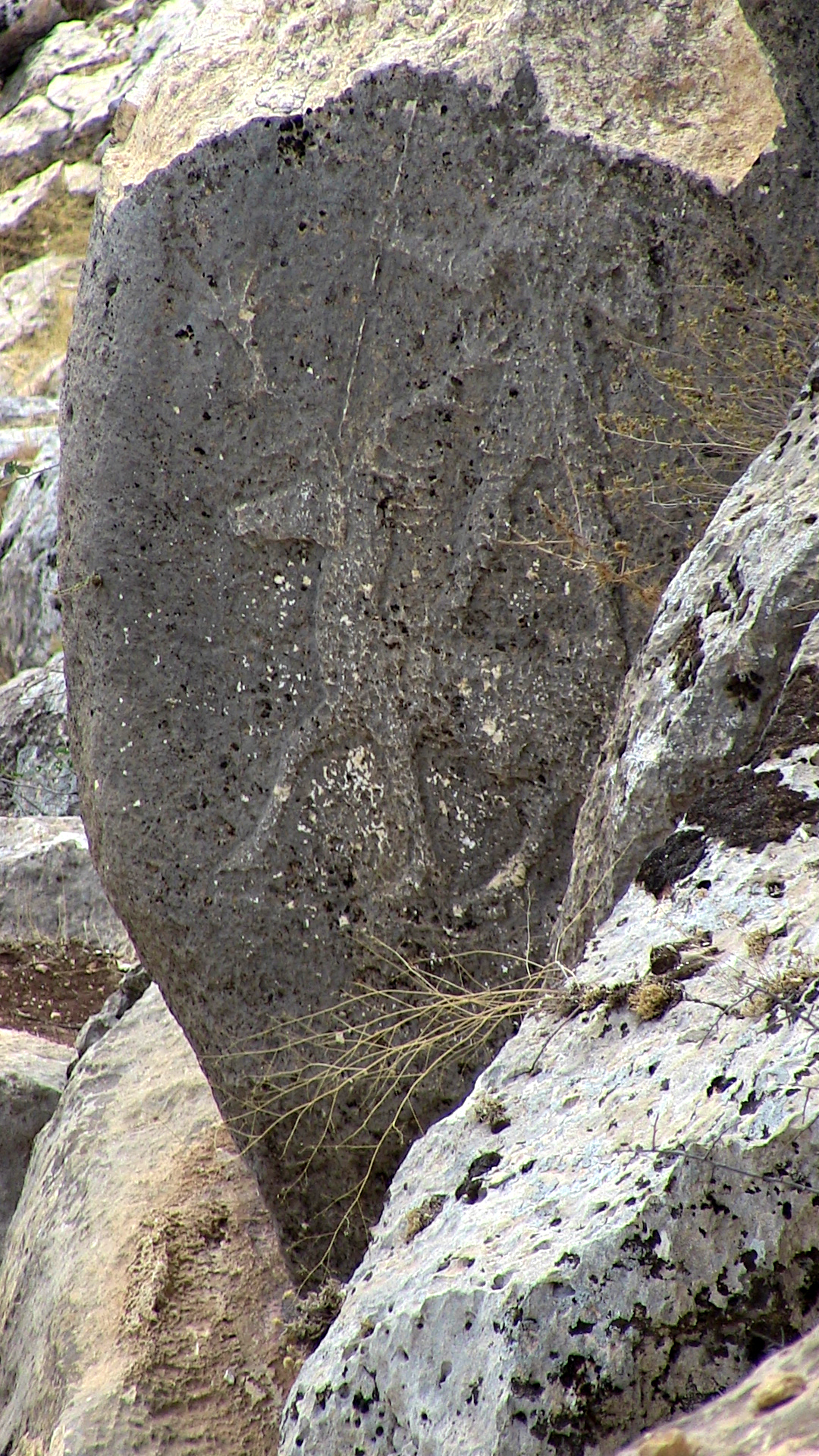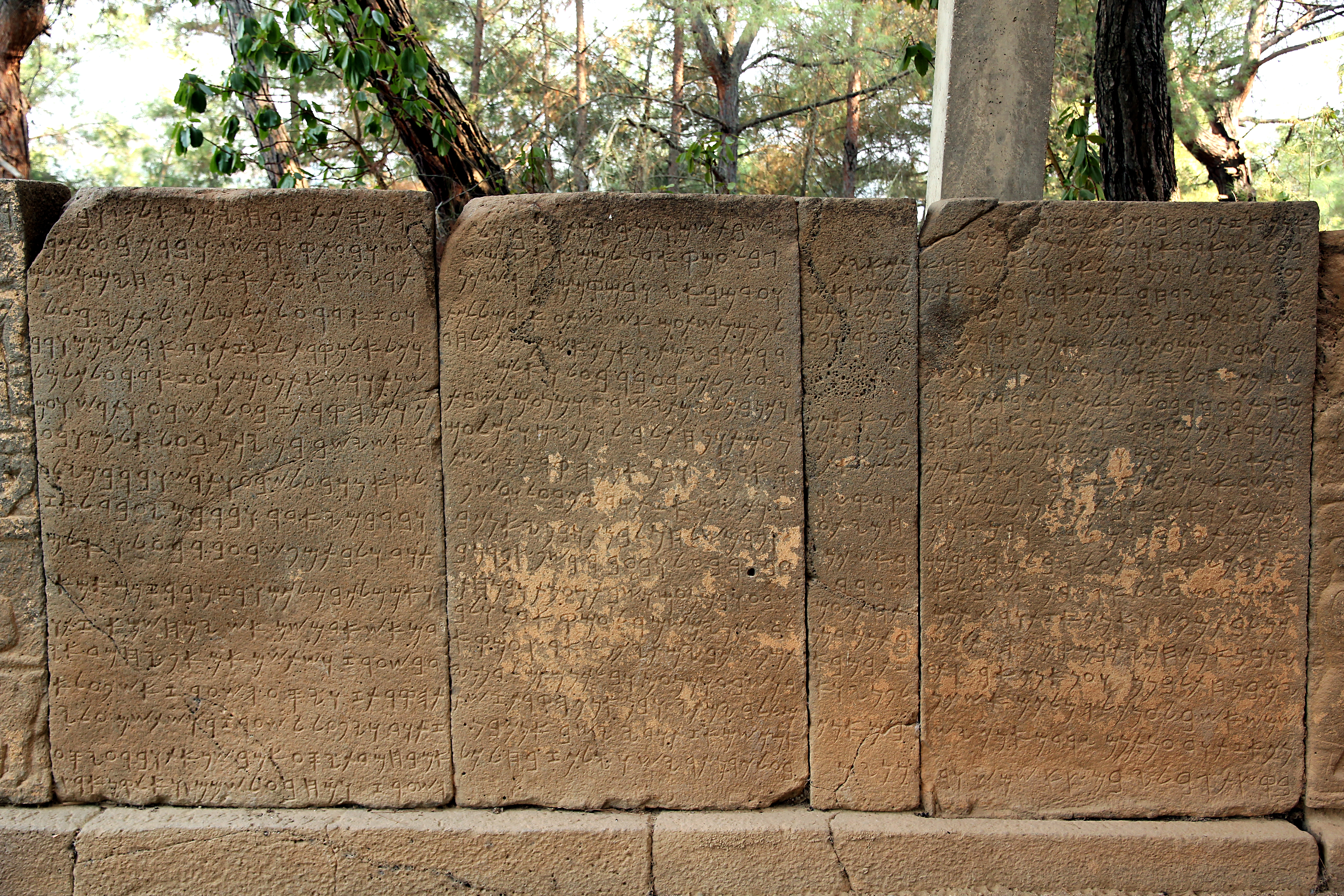|
Runtiya
__NOTOC__ Runtiya was the Luwian god of the hunt, who had a close connection with deer. He was among the most important gods of the Luwians. Name The name was written in the Luwian cuneiform of the Bronze Age as , which can be read as *Runtiya or *Kruntiya. In Hieroglyphic Luwian of the Iron Age, he was named "Runtiya" and his name was generally written with the image of a deer or antlers, as (DEUS) CERVUS ("God deer"). The name is possibly derived from a word for "horn" or "antler", but all the etymologies which have been proposed to date are problematic. The relationship between Runtiya and the Kurunta is disputed. Some scholars argue that the two gods are identical and reconstruct an older Luwian form of the name, *''Krunti(ya)-''; others suggest that there was a pre-Indo-European Anatolian divinity which the Luwian Runtiya and the Hittite Kurunta had developed. Runtiya was often invoked in personal names: the oldest example derives the 18th century BC Kültepe, where a m ... [...More Info...] [...Related Items...] OR: [Wikipedia] [Google] [Baidu] |
Resheph
Resheph (also Reshef and many other variants, see below; phn, 𐤓𐤔𐤐, ''ršp''; Eblaite ''Rašap'', Egyptian ') was a deity associated with plague (or a personification of plague), either war or strong protection, and sometimes thunder in ancient Canaanite religion. The originally Eblaite and Canaanite god was then more famously adopted into ancient Egyptian religion in the late Bronze Age during the Eighteenth Dynasty of Egypt (late fifteenth century BC), also becoming associated with horses and chariots. In Biblical Hebrew, ''resheph'' is a noun interpreted as "flame, lightning" but also "burning fever, plague, pestilence". Etymology Resheph is known by a multitude of names, including Rahshaf, Rasap, Rashap, Resep, Reshef, Reshpu, Rapha, Repheth, and others that are not standardized. Ebla The name is found in third millennium BCE tablets from Ebla, as ''Rašap'' (''Ra-ša-ap''), listed as divinity of the cities of Atanni, Gunu, Tunip, and Shechem. Rasap ... [...More Info...] [...Related Items...] OR: [Wikipedia] [Google] [Baidu] |
Ala (Luwian Goddess)
__NOTOC__ Ala was a Hittite and Luwian goddess of the wilderness and partner of the god Runtiya. She played only a minor role in the pantheon. Name "Lady Ala" ( Hittite: dMUNUS Ala-; Hieroglyphic Luwian: FEMINA Ala-) appears in one Bronze Age Hittite text and several Iron Age Luwian texts. The name may derive from the Luwian adjective ''ala-'' ("high"). Personal names in which the goddess is invoked cannot be identified for sure on account of the shortness of the name and cannot be distinguished from names incorporating the adjective ''ala-''. Perhaps the women's name, Alawani, which is known from 18th century BC Kültepe, is connected to the goddess. Role Ala was generally worshiped with the god of the meadow, Innara, in the Bronze Age and shared several epithets with him. Examples include "Ala of the Animal World," "Ala of the Quiver," "Ala of the Bow," which mark her out as a goddess of hunting. Epithets like "Ala of All Mountains" and "Ala of All Rivers" link her with th ... [...More Info...] [...Related Items...] OR: [Wikipedia] [Google] [Baidu] |
Ancoz
Ancoz is the name used in academic literature for an ancient settlement, which is located below the Atatürk Reservoir in the modern state of Turkey. It is located in the modern town of Eskitaş, which used to be called Ancoz. Location The ancient settlement, whose name is unknown, was in Commagene, north of the Euphrates, on the Chabinas (modern Cendere Çayı), opposite the ancient city of Charmodara. On the hill where the acropolis was located there were two large springs. Both cities are now under the Atatürk Reservoir. History During the Neo-Hittite period (1200-700 BC), Ancoz was a sanctuary site, where the gods Runtiya and Ala-Kubaba were worshipped, with dedicatory inscriptions from King and his son Hattusili. Later, the Commagenian king Antiochus I Theos Antiochus I Theos Dikaios Epiphanes Philorhomaios Philhellen ( grc, Ἀντίοχος ὁ Θεὸς Δίκαιος Ἐπιφανὴς Φιλορωμαῖος Φιλέλλην, meaning "Antiochos, the just, emine ... [...More Info...] [...Related Items...] OR: [Wikipedia] [Google] [Baidu] |
Kurunta (god)
Kurunta (Cuneiform: ) is the Hittite god of wild animals and hunting. Kurunta's Insignia was the deer. He became king of gods after he had thrown Tarhun down from the sky. The god rebel forces humanity against the gods and even does not care about the powerful gods. Because of the wish of gods to get sacrifices furthermore without getting them Enki and Kumarbi unite against Kurunta. With help of Nara-Napsara, the brother of A'as from the underworld, they force all animals and the mountain god Nasalma against Kurunta. After that Kurunta is killed by Tarhun and Ninurta so he accepts Tarhun's sovereignty. Kurunta takes part at the conference of gods after Telipinu Telipinu was the last king of the Hittites Old Kingdom, living in 16th century BC, reigned c. 1525-1500 BC in middle chronology. At the beginning of his reign, the Hittite Empire had contracted to its core territories, having long since lost all ...'s return. He is also the saving god of Carchemish. See also *Runt ... [...More Info...] [...Related Items...] OR: [Wikipedia] [Google] [Baidu] |
Manfred Hutter
Manfred Hutter (born 6 June 1957) is a professor of Bonn University. He is usually interested in writing about minority religions, comparative religions and pre-Islamic Arabia. Manfred Hutter understands scientific studies of religions decidedly as a human-scientific and empirically working discipline of cultural studies, because it understands religion as a partial aspect of culture and examines the interactions between man, culture and society. Therefore, he pleads for a formal and substantive demarcation of the subject from theology and philosophy of religion. For him, religious studies consists of both historical and systematic approaches, since one cannot carry out a comparative systematization without sound historical and philological basic knowledge. The comparison across religious and national borders is for him the added value of religious studies compared to regional studies, which also deal with religions. In this way, for example, "niche products" are made visible that h ... [...More Info...] [...Related Items...] OR: [Wikipedia] [Google] [Baidu] |
Volkert Haas
Volkert may refer to: People * Edward Charles Volkert (1871–1935), American painter * Georg Volkert (1945–2020), German footballer * Stephan Volkert (born 1971), German rower * Volkert Doeksen (born 1963), Dutch money manager * Volkert van der Graaf (born 1969), Dutch assassin * Volkert Kraeft (born 1941), German actor * Volkert Merl (born 1940), German racing driver * Volkert Overlander (1570–1630), Dutch noble, jurist, ship-owner and merchant * Volkert Simon Maarten van der Willigen (1822–1878), Dutch mathematician and physicist Companies * Volkert, Inc., a consulting firm headquartered in Mobile, Alabama Buildings * Volkert Van Buren House, historic home in Oswego County, New York Surnames from given names {{Disambiguation, given name, surname ... [...More Info...] [...Related Items...] OR: [Wikipedia] [Google] [Baidu] |
Cennet And Cehennem
Cennet and Cehennem ( en, heaven and hell) are the names of two large sinkholes in the Taurus Mountains, in Mersin Province, Turkey. The sinkholes are among the tourist attractions of the province. Geography Cennet and Cehennem are situated next to each other. Cennet is situated at and Cehennem is at . Both of them are in the rural area of the Silifke district which in turn is a part of Mersin Province. They are accessible by a long all season open road from the main highway ( D 400). The highway distances are to Silifke and to Mersin. They are close to the coastal town of Narlıkuyu. Cennet The opening of Cennet is 250 x 110 m2 (820 x 360 ft2) and its average depth is . It is possible to reach the bottom of Cennet by a primitive staircase composed of 300 steps. In 2020 also an elevator was established. At the bottom toward the south, there is a smaller and 150 step deeper cave. In this cave are the ruins of a monastery built in the 5th century by a certain P ... [...More Info...] [...Related Items...] OR: [Wikipedia] [Google] [Baidu] |
Korykos
Corycus ( el, Κώρυκος; also transliterated Corycos or Korykos; hy, Կոռիկոս, translit=Koṙikos; tr, Kız Kalesi, lit. "maiden castle") was an ancient city in Cilicia Trachaea, Anatolia, located at the mouth of the valley called Şeytan deresi; the site is now occupied by the town of Kızkalesi (formerly Ghorgos), Mersin Province, Turkey. The city Strabo does not mention a town of Corycus, but reports a promontory so called at the location, but a town Corycus is mentioned by Livy (xxxiii. 20), and by Pliny (v. 27), and Pomponius Mela (i. 13), and Stephanus of Byzantium (s. v. Κώρυκος). In antiquity, Corycus was an important harbor and commercial town. It was the port of Seleucia, where, in 191 BCE, the fleet of Antiochus the Great was defeated by the Romans. In the Roman times it preserved its ancient laws; the emperors usually kept a fleet there to watch over the pirates. Corycus was also a mint in antiquity and some of its coins survive. Corycus w ... [...More Info...] [...Related Items...] OR: [Wikipedia] [Google] [Baidu] |
Karasu Relief
The Karasu relief, also known as the Süpürgüç relief after the earlier name of the nearby town of Akbudak, is a rock relief located on a tributary of the Euphrates and derives from the Neo-Hittite period. It depicts a protective god standing on a deer. Rock reliefs are a prominent aspect of Hittite art. Location and discovery The relief is located near the town of Gümüşpınar near Akbudak in the district of Araban, Gaziantep Province, Turkey, on a cliff-face about 200 m above the Karasu river, about three km from where it meets the Euphrates. Here the river has dug a deep gorge in the limestone of the ''Kartal Dağı''. A few metres below the top of the cliff is the relief on the east side of a rectangular outcrop. In the early first millennium BC the border between the Iron Age kingdoms of Kummuh (later Commagene) and Carchemish was located in the area. From the inscription on the late Assyrian relief at Kenk Boğazı, ten kilometres away, it appears that both r ... [...More Info...] [...Related Items...] OR: [Wikipedia] [Google] [Baidu] |
Karatepe Bilingual
The Karatepe bilingual (8th century BC), also known as the Azatiwada inscription, is a bilingual inscription on stone slabs consisting of Phoenician and Luwian text each, which enabled the decryption of the Anatolian hieroglyphs. The artifacts were discovered at Karatepe, southern Turkey by the archaeologists Helmuth Theodor Bossert (1889–1961) and Halet Çambel (1916–2014) in 1946. This inscription has served archaeologists as a Rosetta stone for deciphering the Luwian glyphs.J. D. Hawkins and A. Morpurgo Davies, On the Problems of Karatepe: The Hieroglyphic Text, Anatolian Studies, vol. 28, pp. 103–119, 1978 The inscription is known as KAI 26. Contents The inscription reflects the activities of the kings of Adana from the "house of Mopsos", given in Hieroglyphic Luwian as ''mu-ka-sa-'' (often rendered as 'Moxos') and in Phoenician as Mopsos in the form ''mpš''. It was composed in Phoenician and then translated to Hieroglyphic Luwian. This geographical area of ... [...More Info...] [...Related Items...] OR: [Wikipedia] [Google] [Baidu] |




